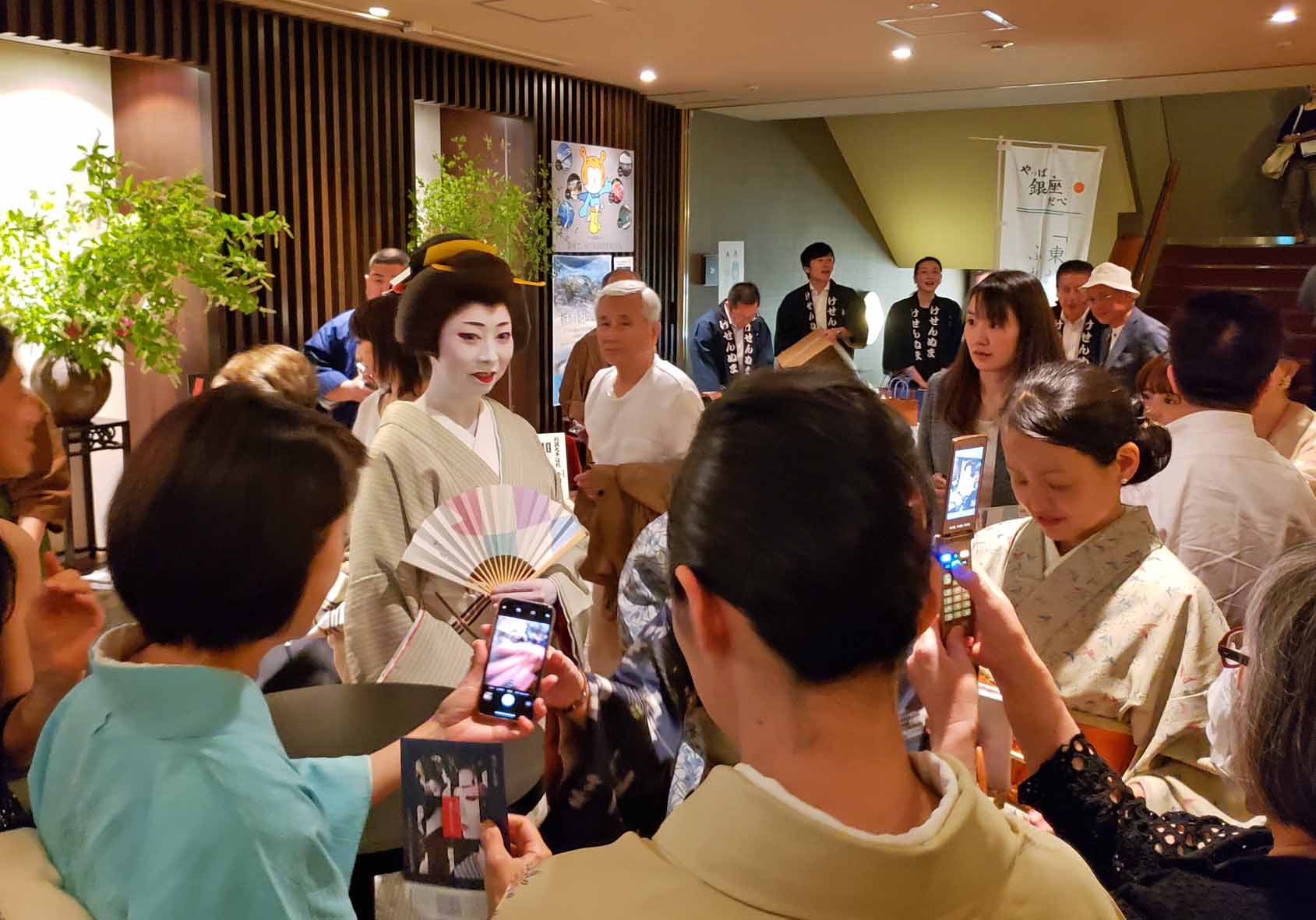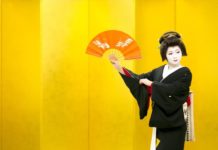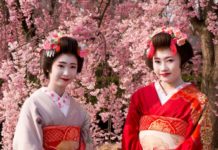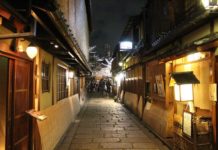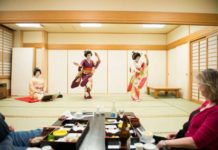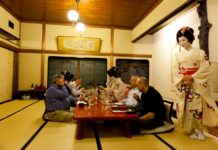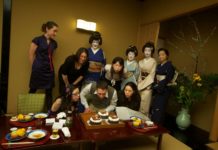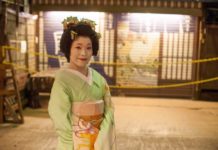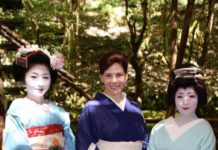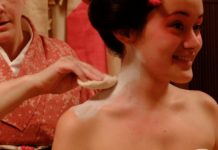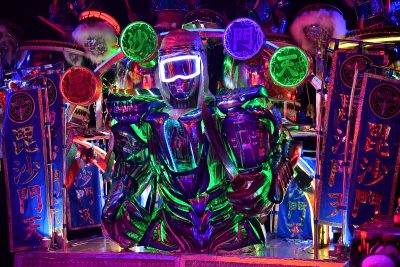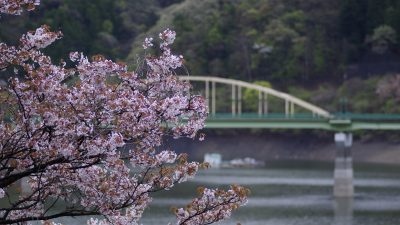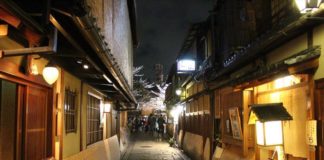“Geisha”,“Kyoto” – these words go hand-in-hand; as natural as “fish” and “chips”! However when we think about Tokyo, different words spring to mind – modernity, consumerism and perhaps, images from the movie Lost in Translation. Yet, Tokyo has a genuine Geisha community, similar to that of Kyoto – the only difference – Tokyo’s Geisha are more well hidden.
The word itself is made up of two kanji, “art” and “doer”. What makes the world of the Geisha truly unusual (for Japan) is that it is a uniquely women-centered art form. From the tea house owner, to the trainers, from the artisans and musicians, to the management – this truly is a world ruled and run completly by women. The only male in the equation is the customer, and even this is not always the case, as the artisan skill of a Geisha is appealing to both women and men.
Discover Tokyo’s Hidden Geisha World: The Allure of Shinbashi Enbujo Theatre
The traditional Geisha areas of Tokyo centre around the tea house districts of Shinbashi, Asakusa, Yoshicho, Kagurazaka, Hachioji and Mukojima. Life within a Geisha society is both fascinating and secretive. Their trade and skills, learned over generations, are displayed to a carefully selected few, in locations accessed by invitation only. Occasionally, Geisha will come into the general public to perform, but the art itself is still very much practiced behind closed doors.
As a tourist it is therefore nearly impossible to see the real thing in action. Many Geisha dances open to tourists are performed by skilled actresses, but not real Geisha, who have to undergo years of training and apprenticeship in a registered family-based school. Yet for the tourist who does want to sample the real thing in an elegant and accessible environment, there is a way! Welcome to the Azuma Odori.
Once-a-Year Geisha Dance: The Charm of Tokyo’s Azuma Odori
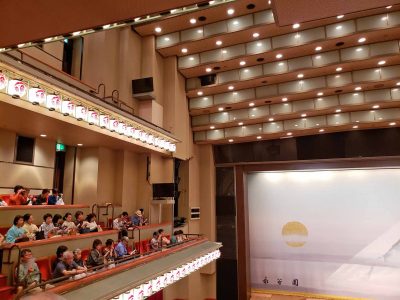
Azuma Odori is one of the few opportunities to see traditional Geisha performances in a public arena. These dances, which trace their history back to the traditions of Kyoto, are held at the Shinbashi Enbujo Theatre, once a year. It is a 4 day event, filled with the art and style of the Tokyo Geisha, and is well worth a visit.
At first glance the Shinbashi Enbujo Theatre might seem like a “lesser” cousin to the more colourful Ginza Kabuki-za, but – you would be wrong. Yes, the building has a more austere appearance, but its austere façade hides within it a warm and welcoming smile. The theatre was originally built in 1925, but was destroyed during World War II, and renovated in 1982. The funding for the theatre, and some of its performances, came from many local Geisha Houses (or schools), the largest of which being the Morikawa. While the Kabuki-za specializes in traditional forms of kabuki, Shinbashi Enbujō endeavours to expose people to more experimental styles.
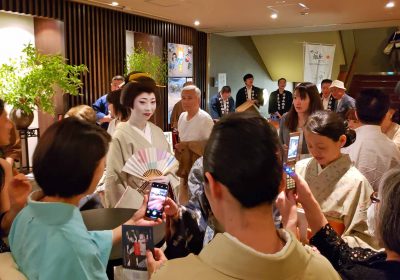
Azuma Odori allows guests not only the chance to enjoy performances on stage, but also to meet some of the Geisha as they wander through the crowd. You can also sample “ryotei” at the event – and watch the Geisha as they sit and enjoy a meal with you in a large community hall. Ryotei is a traditional Japanese high-class dining experience and forms part of the Shinbashi magic. Eating together with other guests and the Geishas, is a truly magical experience. You can even get a bento lunch box provided by some of the supporting Shinbashi restaurants – which makes for a great take home souvenir.
The Azuma Odori consists of two parts, split by a 30-minute break. Each scene is choreographed to depict a story, and is created by the various Shinbashi Geisha schools, such as The Nishikawa and Onoe. Themes revolve around love, heart-break, and friendship; eternal themes forged in history. As cameras are not allowed during the performance, I made these notes, which I hope gives a glimpse into the wonder I experienced during this 2 1⁄2 hour event.
Not Just Kyoto! Where to Experience Authentic Geisha in Tokyo
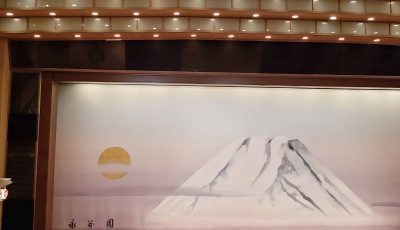
Entering the theatre, I am impressed by the number of lovely kimono cladded ladies who take their seat with a traditional elegance. The audience is primarily women. The few men who have come to enjoy the event are dressed in more formal western attire. This is a performance for “those in the know”, and the majority of people look like they are well accustomed to the kabuki culture. There are not many foreigners or “new comers”, which adds to the authenticity of the place.
As the mountain curtain is raised, I get my first glimpse of the stage. Kabuki is a simple affair, lacking the elaborate decorations and props of Western theatre. The first scene starts with the sound of the shamisen (a kind of Japanese guitar). The musicians – 6 on one side, 5 on the other side of the stage – are all women, as are the singers. Then, with fans in hand, from underneath the stage, the Geisha dancer platform rises to great applause. Styling around the stage, with knees raised, and heads titled, seven Geshia dance and pose for the audience in time with the music. The “Azuma Hakkei”, is a modern style of Geisha choreography. Stylistic in design, it gives a great indication of things to come.
In contrast, the second performance is more subdued. The Uno Hana Shinbashi, based on the four seasons of the year, is a story of love and friendship involving three dancers. The story is that of two people and their “accompanying” musician, as they stroll through the seasons and enjoy the festivals of the region. Again, all the performers – including the “man” musician are played by women, and the sound of the drums, beaten to precision by 4 female Tamaki players, and the shamisen is inspirational.
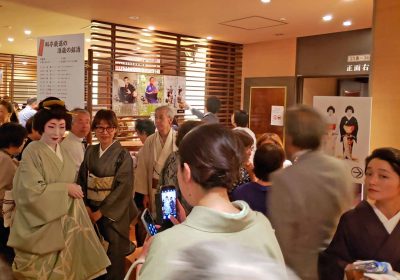
Following a 30 minute interval, with the opportunity to again sample some traditional food and drinks – and off course Geisha interactions – the second half of the Odori begins with the first of several shorter performances. The first is an amazing musical interaction between instruments, especially the taiko drums, known as the Ginza Bayashi. Both graceful and uplifting it is a real testament to the Geisha skill.
After an amazing crescendo, the stage floor opens up to reveal 5 beautifully kimono cladded ladies. One of the most elegant performances, the Shinbashi Gonin Onna, dance is a classic odori with an upbeat tune. At times the music slows and the lead dancing “couple” takes the stage, while at other times the musicians seems to be the focus.
Afterwards, each dancer introduces themselves to the audience, with a traditional oratorial style mixed with subtle humour. The audience judge the wittiest response with their applause.
Following this, the kabuki equivalent of a “sing along”, takes place. As classic odori “tunes” play, the audience is encouraged to sing. My neighbours, three traditional looking older ladies, were singing in full voice! After the Zasiki Uta, two more classic dances follow. The first inspired by classic literature and ukiyoe imagery, while the second, an Edo period piece, highlights a relationship between a “man” and his Geisha.
The finale Kojo involves all dancers (16) and musicians on stage and combines traditional sounds of taiko and shamisen with new Shinbashi sounds, such as trains, cars and modern street noise. This combination of modern and tradition is amazing to see and summarises perfectly the way Japan manages to merge both “worlds” into a synergic harmony.
At the end of the event, as I filed out of the theatre, I was left thinking what a privilege it was to witness the Geisha art. The modernity of Japan embedded within this historic performance uplifted my spirit. It is unfortunate that this event is only performed once a year – but if you get the opportunity, please visit. The Shinbashi Enbujo Theatre also holds other kabuki performances with an experimental twist – so keep an eye on their website too! You won’t regret it.
WATTENTION NINJA WRITER PROFILE
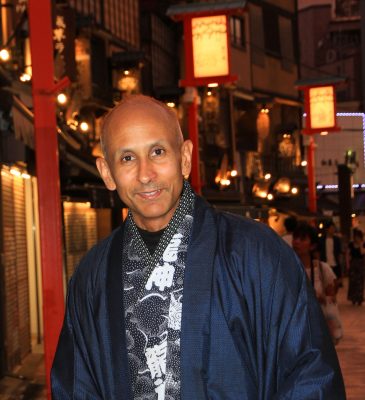
Mark Williams was born in England and graduated with a Masters Degree in International Relations. After teaching at Adelaide University in Australia, he recently moved to Tokyo to teach. Despite struggling with the language, Mark has developed a strong passion for Japan, its traditions and sports. He loves music, nature and photography, and enjoys travelling – especially in Tohoku. When he is not working or perusing his hobbies, Mark can be found in a local bar or coffee shop soaking up the atmosphere!
 0
0

